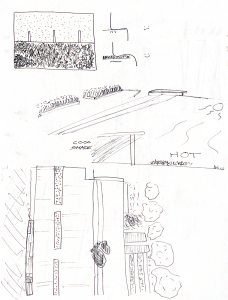In class:
Trying to show the height of this planter on a ramp, while unsure if the people the ramp is actually for can enjoy the planter as much as I can.
Assignment 7:
Movement, speed and things I noticed about the way I move through my space!

School of Architecture and Landscape Architecture (SALA), University of British Columbia

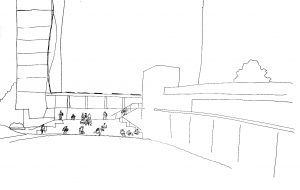
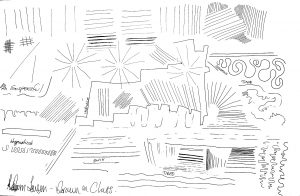
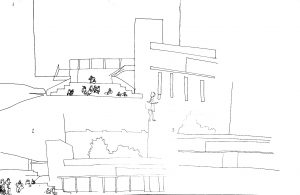

I chose to draw the backyard of my house, starting with a silhouette and ending with a collection of one-line drawings. I particularly enjoyed the challenge of portraying many rotting apples with a single line.
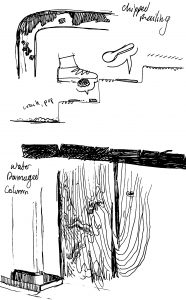
For my first drawing I tried to draw the texture of a water damaged wood column, gradually approaching and sketching in steps at different scales. I then walked up and down three small steps using a handrail with my eyes closed and analyzed what my hands feet felt.

In my second drawing I did rubbings of all the textures surrounding where I was sitting. This includes concrete, wood, stone tile, grass, and metal.
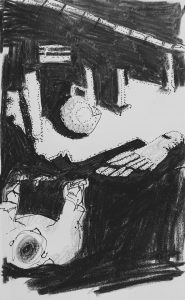
For my third drawing I walked around and felt the heat of surfaces around me, which ultimately was a map of where the sun was hitting. Some warm spots where the sun didn’t hit however were around the curves of a large metal sphere across from me, and the heat of my own body.

For my fourth drawing I was within a study room on the ground floor of Orchard Commons. I tried to draw a plan view to test how I could represent the textures of the seat cushions of the room, as well as the tables.
 For my fifth drawing I sat on the fake grass field behind the Nest. I tried to represent how it felt to sit on the spot without directly drawing what was actually there. I chose to compare where I was sitting to sitting on an overturned refrigerator, and the grass felt like the abrasive side of a cheap sponge.
For my fifth drawing I sat on the fake grass field behind the Nest. I tried to represent how it felt to sit on the spot without directly drawing what was actually there. I chose to compare where I was sitting to sitting on an overturned refrigerator, and the grass felt like the abrasive side of a cheap sponge. I had a studio classmate hand me a surprise object for this assignment. I have listed my thoughts, more or less in order of appearance, when drawing the object my eyes closed.
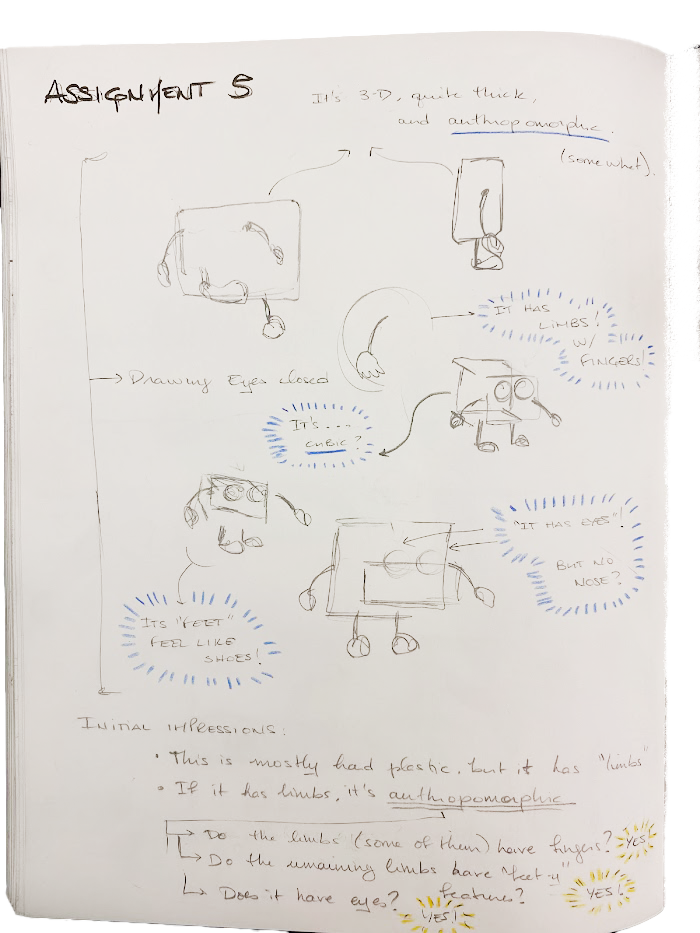
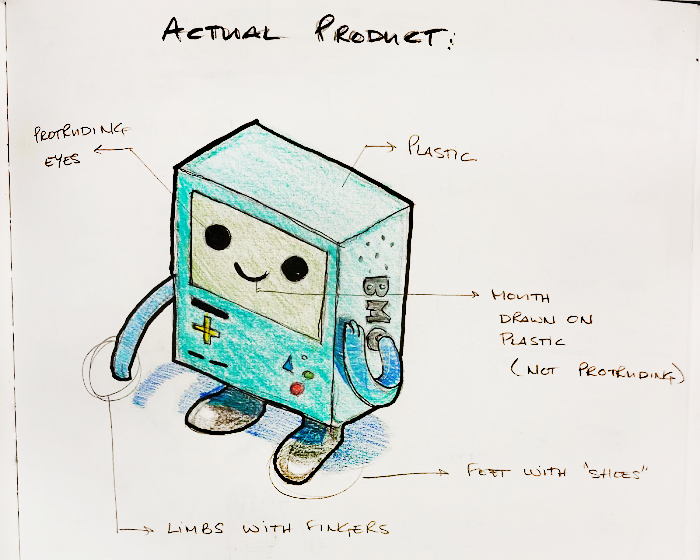
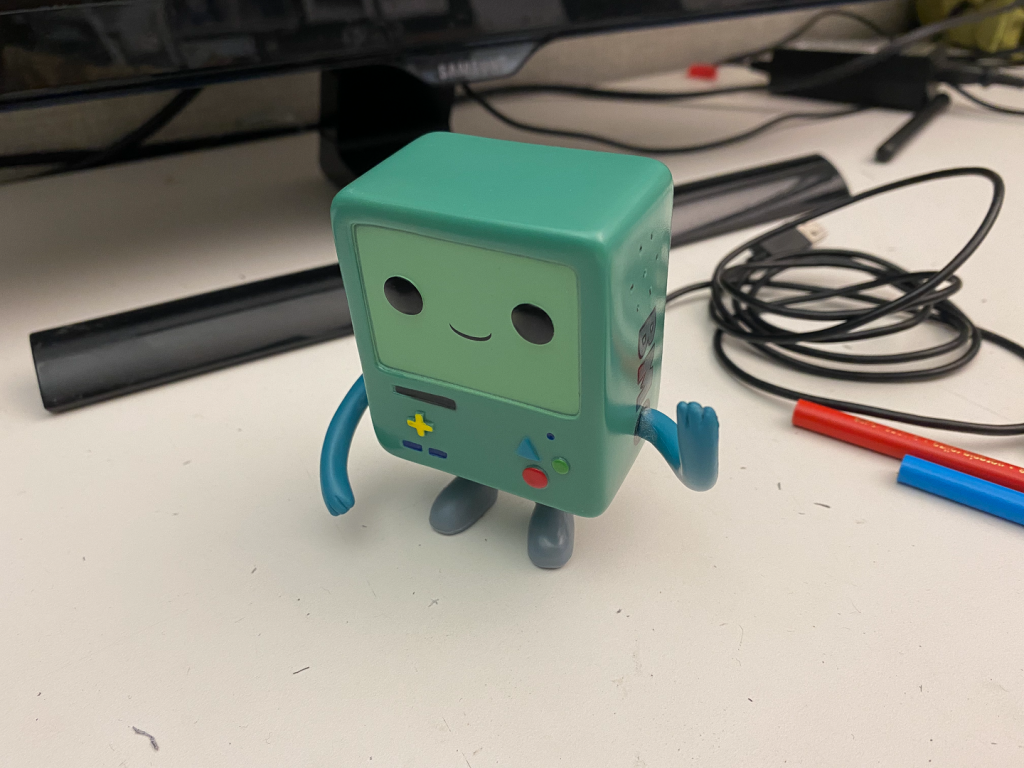
For this assignment, I have mapped my own bedroom, taking the time to note its different sensorial elements using the matrix proposed in Daniel Roehr’s book. The construction in 2PP allowed me to better understand the scale and the shape language of the space.


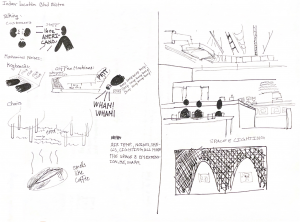
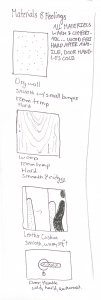


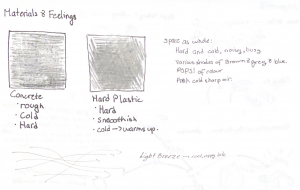

In Class Work:
